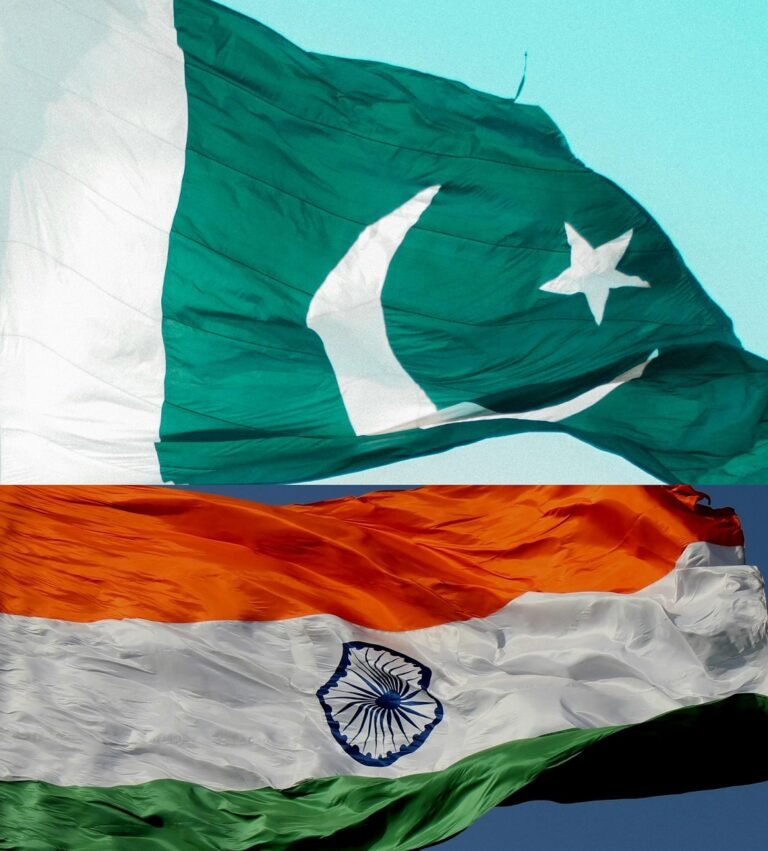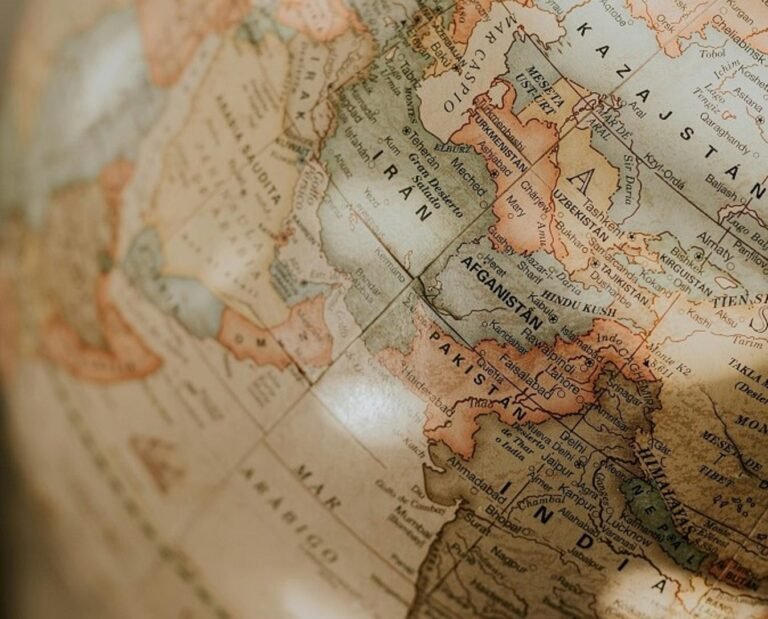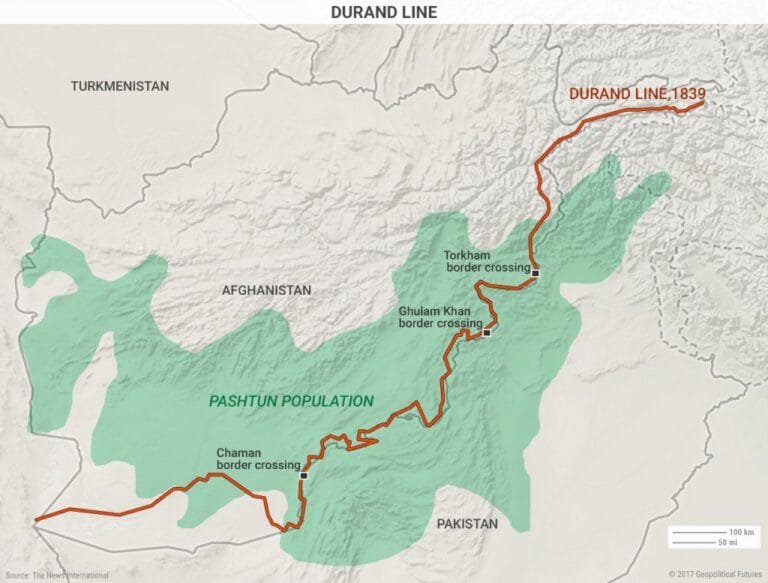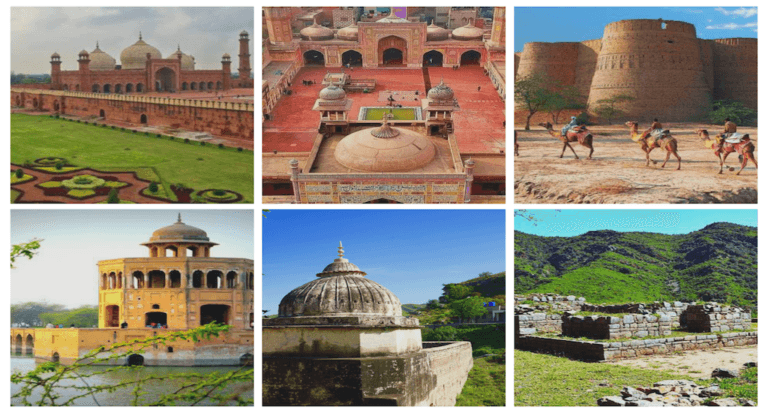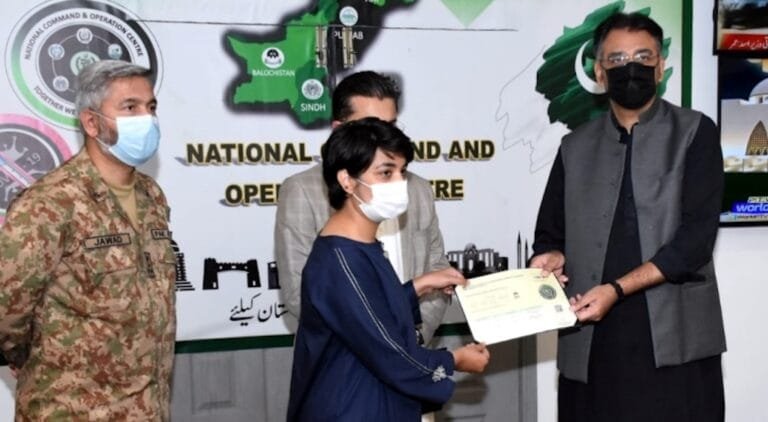CPEC and the Strategic Power Game in South Asia. The CPEC has a strategic impact on China-Pakistan, China-India, India-United States and US-China ties. The U.S. focused support for Pakistan may prevent Pakistan from depending on China, which mitigates some of the worst consequences.
South Asia is hit by typical and atypical security challenges such as poverty, destruction of the environment, water and food safety, low literacy, poor health and inadequate infrastructure overall. Moreover, the poor economic implementation and unanswered interstate policy matters between South Asia Regional Cooperation Association members (SAARC) frequently affected the region’s growth and innovation, creating it, even during the present age of Geo-Economics, one of the most marginalized areas in the world.
Today in South Asia, major political power is reviving. The increasing Chinese military agenda in the area is financially matched by the Chinese-Pakistan economic corridor’s Infrastructure development, its largest and most sophisticated component. How the US should pursue the new dynamic remains ambiguous.
China-US Strategic Competition
In this already fragile environment of South Asian security, the US has invested in India in balancing China, while Pakistan develops strong links with China, it is particularly crucial to focus on the impact of this rising competition between the United States and China. Pakistan has been particularly problematic because of the speed at which U.S.-China competition is increasing, and the bipartisan character of US resistance to China. The national interest of Pakistan is to ensure that all its eggs are not placed in the bucket and to withstand any stress in the strategic competition between China and the United States.
ALSO READ: Challenges to Pakistan’s Export Growth in International Trade
This article seeks to emphasize the Pakistani outlook on the increasing rivalry between China and the United States and to evaluate Pakistan’s strategic opportunities to compete in rough waters. Conflicts between the US and China can disrupt Pakistan’s tries to hold relations with these two countries in a range of ways, by persuading Pakistan to choose between increasing economic and safety cooperation with China and to work with the US and the global community in general on such challenges.
Pakistani Politics and CPEC
The political leaders in Pakistan are seeking to keep their options open, waiting for the future US government’s attitude to China and the wider region to be articulated. This uncertainty is there in Pakistan at a tough moment where the economy is still on the horizon. The COVID-19 epidemic has already brought down the lack of brilliant national growth. The Financial Action Task Force (FATF) has once again placed Pakistan on a “grey list” which brings fresh economic issues into play.
Hopeful Politicians in Pakistan look forward to playing a pioneering role in alleviating US-China tensions. But more realistic evaluations demand proactive risk-building management and mitigation in the wider U.S.-China strategy competitive environment that is expected to last over the next years. Some of the safety improvements that Pakistan can take to decrease its increasing dependency on China involve changes in the country’s implementation of China Pakistan Economic Corridor (CPEC) developments and the pro-active creation of potential to support Chinese funding by the United States and other investors.
ALSO READ: What EU Parliament’s Decision to Review GSP+ status means for Pakistan?
This report is driven by a research effort that spans a year recreating the historic but volatile history between Pakistan and the U.S. to propose ideas for mutually beneficial and durable bilateral linkages. Discussions were focusing on the challenge to stabilize Afghanistan, how the US could better manage its closer ties with India without exacerbating Pakistan’s regional insecurities, and the impact on its political economy and relations with the United States of the growing relationship between Pakistan and China.
The CPEC and its Various Actors
South Asia has certainly been one of the most ignitable areas in the globe. Two nuclear powers have been engaged in several border clashes and military confrontations for years. China’s involvement in this area has expanded rapidly to an unparalleled degree, as Beijing fiercely promotes its globalization and connectivity via the Belt and Road Initiative, which focuses on the CPEC new initiative. The success of the CPEC is based on two fundamental factors: regional connectivity and regional collaboration, given present regional conditions.
Consequently, in trading, construction, economic expansion, production and energy areas further than the Chinese-Pakistan link, the CPEC must be completely connected to the whole area of South, West and Central Asia. Pakistan has now become a vital actor through the CPEC and a major contributor to the area’s economic activity. Pakistan is at the junction in these three areas (South, West and Central Asia). Asia is likely to contribute over 50% of world GDP by 2050, and that the port of Gwadar would become a regional transshipment center.
CPEC will encourage investments in various areas of the Pakistani economy, and is, therefore, a real game-changer in South Asia. In other nations, too, there might be positive opinions towards the CPEC. For instance, Afghanistan supported the construction of the CPEC, with its economy heavily relying on huge foreign aid and investment. It wishes to be part of the initiative to engage in international commerce and operate as a transit center of commerce between the Central Asian republics and East Asian countries.
The CPEC will substantially help to increase economic self-sufficiency and encourage the economic growth of Afghanistan in the long term, especially because of US military exit from Afghanistan, which is likely to considerably limit western safety and funding aid. Similarly, the growth of the CPEC can provide huge advantages for India and Iran.
CPEC – Pakistan India China Rivalry
Policy and security rivalry between India and Pakistan are among the main challenges to the CPEC. A partner major power competitor with China, India and its neighborhood is an area whose security and development are vital to China’s neighboring policy in general, particularly the diplomacy of the BRI.
For years, their geopolitical zero-sum mindset influenced relations between the two nuclear states in the area — the Indians and Pakistan — as well. Although a modest alteration would almost likely lead to reactions from the others, but also regional chains, in either New Delhi’s or Islamabad’s territorial division of power.
China’s world activism and its western journey to the subcontinent with its concentration on strengthening interconnectivity with Pakistan and the neighbourhood’s smaller nations has triggered a regional reconfiguration, bringing India nearer to the US and Japan.
It appears as though a global struggle is being contested at the subcontinental level among Beijing and Washington, centered upon the four-sided dynamics of the China-Pakistan alignment with the United States-India alliance.
Importance of CPEC for South Asia
CPEC rewrites the subcontinent’s economy and quality of life and regional stability to need more than just a periodic, operational reaction.
Trade channels have been flowing from north to south traditionally and worldwide. Exceptions have arisen, like when Britain/North Europe was a major consumer of goods and economic power, and trade routes migrated south to north. However, the trend is kept for even the most section.
As India expanded its business in 1991, it was paradoxical when its neighbours lacked significant economic absorption. Every Prime Minister has subsequently come to see that with the growing economy of India, Pakistan is being pushed by economic and commercial reasoning, regardless of party, and despite its feelings and political ideals.
This might be a result of awareness or ego, internal pressure or international tides. It would make Pakistan, either India’s Canada or India’s Mexico, depending on its location. The conviction of the North-South supply line cannot constantly be disregarded.
With a bet on the east-west route from Xinjiang province to Gwadar, the CPEC is replacing Pakistan’s reliance on the north-south commerce channel. This channel of commerce is quite uncommon and an indicator of China’s emerging military and financial architecture.
CPEC – Investment by China
CPEC is certainly not quite the “opportunity corridor” that its backers are arguing for. There is no financial sustainability for many of its initiatives. Tariffs are not viable for most Pakistanis in the energy plants it is building. In South Asian countries, CPEC follows a similar pattern of Chinese investments — such as the Hambantota Port, Sri Lanka.
In this example, many of China’s “investments” are a loan to be repaid by the host nation. The majority of Chinese money is not going to the local population but is moved from a Chinese government bank or credit institutions to a Chinese government or government inclusive development that runs the program by Chinese labor.
CPEC is also following this course across all accounts. Nevertheless, its measured relative is more than normal for China. It provides Western China, as a substitute to the Malacca Strait, with passage to the Indian Ocean. It also offers China a footprint in the neighborhood of India and Western Asia and territory for all purposes that will offer China space for quick military and political impact.
The political and military establishment of Pakistan has voluntarily approved this Chinese geopolitical strategy, regardless of whether CPEC power stations finally illuminate houses in the countryside in Punjab or not. Like in the past, it has gladly surrendered the realistic long-term needs of its nation to benefit the individual and serve a foreign donor.
IPEC – The U.S. Project Against CPEC
The idea of the Indo-Pacific Economic Corridor itself can be linked back to a statement given at the East-West Center by US State Secretary Hillary Clinton in which she said the IPEC was totally a U.S. dream for their interests in the Indo-Pacific and that projects were structured that would considerably structure Asia-Pacific
The US Secretary of State John Kerry emphasized the great market IPECs have at the 2013 Indo-U.S. Improve Information in addition to strengthening cross-regional commerce and transportation between south and south-east Asia. It was an approach that complimented Obama’s “Asia-Pacific Rebalancing” plan to leap into enormous advantages of economic growth and development and to enhance U.S. participation in the region’s appropriate development path.
President Trump worked extremely closely with U.S. partners leadership in the Indo-Pacific area well before his presidency. President Trump’s historic tour to the Indo-Pacific also took place in 2017. In his address in Da Nang, Vietnam, he suggested a comprehensive idea for FOIPs to reorganize America’s regional way of managing emerging China. In his address, he suggested the basic idea of the Free and Open Indo-Pacific plan.
The route in front of the IPEC will not be simple, notwithstanding the start of a business strategy of the United States and its Asian friends and partners. Before all sides can declare significant successes, major challenges must be resolved.
Firstly, due to long antagonism among Islamabad and New Delhi, South Asia is the world’s least economically linked area and there are still few subcontinental trade volumes due to the many barriers set by the two administrations.
Secondly, the nations of Southeast Asia see Beijing as a supplier of more growth and investment instead of New Delhi, as Indian internal politics and several trade hurdles hold back interest in entering businesspeople and investors.
The third objective is to compete for strategic focus and considerable investment, on bilateral, trilateral and multinational regional interconnection efforts of various sizes.
Why is the CPEC going to dominate?
It is commonly thought that the BRI is an ambitious undertaking and a continuous effort that can transform the dynamics of regional and global power. While it is fully a project centred on the economy, the effort has attracted sceptics and escalated regional tensions from Washington and New Delhi.
However, Chinese policy-makers have stated and used an optimistic and constructive attitude and, in particular, in the Democratic camp, certain people in the American foreign policy sector saw the Chinese-U.S. relationship as a link between rivalry and collaboration.
In reality, China is also engaged along with Bangladesh, India and Myanmar on the construction of an economic corridor, the BCIM, joining the four countries, separate from the CEPC, the “flagship project and iconic model” of the Mega construction investment and economic growth in Pakistan.
The economic corridors of the CPEC and BCIM are important BRI partnership initiatives. As regards CPEC, the project agenda is geared towards regional collaboration, infrastructure investment, economic growth, finance and win-win results that are intended to produce tangible economic advantages for South Asian countries.
Nevertheless, as the primary sponsor for regional economic integration, China must explain its neutral stance concerning India-decades-old Pakistan’s animosity and push peace negotiations of good faith in every way that is possible. As the BRI is a multi-stakeholder initiative and CMEC, in particular, is in the interest of every major actor in the sub-continent, a stable and peaceful neighborhood.
The China-Pakistan Economic Corridor’s Strategic Implications
The evolving position of China in Pakistan provides a chance to study China in a learning manner, in a demanding context and as a player in Pakistan-India long-term competition.
The China-Pakistan Economic Corridor (CPEC) long-term investments of China may be justified in at least three ways: to show China as a partner; to showcase China’s economic structure can be transferred, and to utilize Pakistan as a component of its geopolitical confrontation with the USA and India.
The Chinese seeming lack of enthusiasm in constructing a transit link overland and counter-terrorism worries are mitigating the optimism that the Pakistani CPEC will continue to be responsible for these future years.
China’s rise to Pakistan is increasingly likely to heighten Pakistan’s risk to India, especially if China extends its military posture there and Pakistan does not curb its use of terrorist groups. Another push to enhance the US-India alliance with a joint danger from China and Pakistan might be the resultant dynamic.
Chinese investments’ overall victory will remain to be jeopardised by Pakistani political turmoil and continuous terrorist attacks.
The US might provide specific assistance for Pakistan, which can help improve and stabilise Pakistan by best using China’s infrastructure to expand Pakistan’s economy.
Conclusion
Economic growth is crucial to South Asian social stability, with the CPEC as a mostly geo-economic rather than global political model, and to the expanding influence of China in the area. While regional collaboration and interconnection are key elements of the CPEC, the move, especially from a pivotal India, has caused considerable worry. China, therefore, has to pay more attention to regional problems and help increase communication and performance engagement with regional powers.
It is also important to Pakistan to reframe its regional policy to standardize the diplomatic ties in its neighborhood, in particular with India, to ensure the future of the CPEC and its sustainable growth.
To date, peace conversation, rather than their mutual goals of economic growth or cultural interchange, is very often and substantially centered on the political and ideological feelings of both nations.
Given that a weak and ineffective Pakistan does not fit in with the interests of India and China, China may mediate in a geopolitically most problematic region of the globe so that Pakistan and India may settle their conflicts and focus on socioeconomic regional growth.
In addition to the policy of regional power, Pakistan has significant hurdles for CPEC advancement in internal financial realities (e.g. insufficient manufacturing sector, limited Investment) and serious security issues, like trans-border terrorism. Pakistan, India and Afghanistan pose major external threats to geopolitics and stability, while domestic resistance and terrorism present internal concerns.
Thus, Pakistan should take additional efforts to strengthen its safe environment, a prerequisite for sustained economic growth and connection with other areas of the region with the support of China, the United States and other partners.
Follow us here.


